Marcelo Carneiro
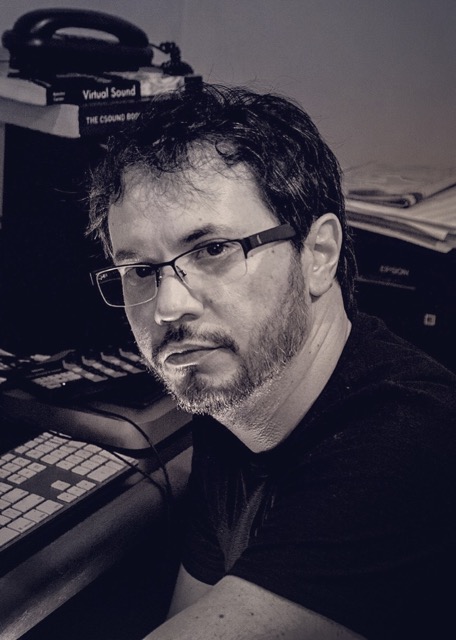 Marcelo is a composer and professor of music at Rio de Janeiro State Federal University (UNIRIO), teaching mostly electroacoustic music composition, music technology, and history of electroacoustic music. He has been working with electroacoustic music (major composing activity), audiovisual composition (vídeomúsica), dance music, and also chamber music. His works have been presented in Brazil, Argentina, Italy, Chile, Ireland, South Korea, Germany, Lithuania. Some of his works were recorded on CDs. He won the 1st Villa-Lobos composers competition (2008), received an Honorable mention at Almeida Prado Prize (2004), was a finalist of IBEU Contest (2007) and has been selected for many festivals in Brazil and around the world. As a researcher, his majors subjects are the hybridization possibilities in the field of electroacoustic music composition and electronica, and electroacoustic music and video, focusing not only on the technical aspects, but mostly on the sociopolitical and ideological aspects of those fields of production and the social commitments of the composer today. He has been working with the composer Jocy de Oliveira since 2010 as part of the Ensemble Jocy de Oliveira. His job is to prepare the electronics and make all the sound diffusion of her operas. As a guitar player he worked with Brazilian Guitar Orchestra, conducted by Aloysio Neves, and many other chamber and jazz groups. He also worked for 5 years composing for the Sylvio Dufrayer’s dance company, presenting works all over the world (Italy, Argentina, Germany, Lithuania). He has coordinated the last three editions of the electroacoustic concerts at Bienal Brasileira de Música Contemporânea, and the 2015 edition of the Festival Compositores de Hoje.
Marcelo is a composer and professor of music at Rio de Janeiro State Federal University (UNIRIO), teaching mostly electroacoustic music composition, music technology, and history of electroacoustic music. He has been working with electroacoustic music (major composing activity), audiovisual composition (vídeomúsica), dance music, and also chamber music. His works have been presented in Brazil, Argentina, Italy, Chile, Ireland, South Korea, Germany, Lithuania. Some of his works were recorded on CDs. He won the 1st Villa-Lobos composers competition (2008), received an Honorable mention at Almeida Prado Prize (2004), was a finalist of IBEU Contest (2007) and has been selected for many festivals in Brazil and around the world. As a researcher, his majors subjects are the hybridization possibilities in the field of electroacoustic music composition and electronica, and electroacoustic music and video, focusing not only on the technical aspects, but mostly on the sociopolitical and ideological aspects of those fields of production and the social commitments of the composer today. He has been working with the composer Jocy de Oliveira since 2010 as part of the Ensemble Jocy de Oliveira. His job is to prepare the electronics and make all the sound diffusion of her operas. As a guitar player he worked with Brazilian Guitar Orchestra, conducted by Aloysio Neves, and many other chamber and jazz groups. He also worked for 5 years composing for the Sylvio Dufrayer’s dance company, presenting works all over the world (Italy, Argentina, Germany, Lithuania). He has coordinated the last three editions of the electroacoustic concerts at Bienal Brasileira de Música Contemporânea, and the 2015 edition of the Festival Compositores de Hoje.
ALT (2016)
The title is ironic. The composition of this piece implied the continuous change of screen pages in my computer: from the score editor application to the software developed by Alexander Mihalic for Sampo. The shortcut to change from one software to the other are the keys ALT-TAB pressed together. Well, I should have chosen it as its title, but decided for the short version ALT. ALT is a violin “duo”, a dialogue, sometimes an oppressive one, from the real violinist and the electronic one. The political situation in Brazil since the end of 2015’s elections really divided the country in two political-ideological fields: as always, the right and the left ones; or those who wanted for president Dilma resignation, and those who fought to defend her. Dilma, as we all know, was recently removed from office to have the impeachment trial judged by Brazil’s supreme court. Beside the fact (the real and important one) that there are more than two poles in this matter, those two groups illustrate the differences - not only of the political and social interests in Brazil - of Brazilians’ social, cultural, and values divisions. We are all Brazilians (the violin “duo”), but we are not the same. The musical structure deals with those political ideas: it is based on a mix and pre-compositional transformation of Maracatu and Coco rhythms, on a group of harmonic related chords, and sort of delays and echoes that violently replicate and disturb each others parts. Improvisation and determination are in a continuous dialectic relation: sometimes what is determined can be accessed, created, or subverted by the violinist. Precision and inaccuracies altogether. The violinist is imprisoned by the score, but she can subvert it if she wants or needs to.
Fabio Cifariello Ciardi
 Fabio Cifariello Ciardi (1960) is a composer using sound and technology to mine real-word phenomena. His most recent interests are in sonification and instrumental transcription of speaking-voice rhythms and inflections. He studied composition, electronic music and musicology at Rome Conservatory of Music and Bologna University. He also studied with Tristan Murail, Philippe Manoury (IRCAM) and Franco Donatoni (Accademia S.Cecilia). In 1991 he won the selection for the “Cursus d’Informatique Musicale at IRCAM”. In 1995 he has been invited at EMS (Stockholm) as composer in residence. His compositions have been awarded prizes at various international competitions: "Ennio Porrino 1989" (Cagliari), "L. Russolo 1992" (Varese), "MusicaNova 1993" (Praha - Czech), "ICMC Cd selection 1993" (Tokyo - Japan), "Olympia 1993" (Athens - Greek), "Spectri Sonori93" (Tulane - USA), XXV Concours Int. de Musique Electroacoustique 1998 (Bourges - France), Valentino Bucchi 1999 (Roma - Italy), Premio Nuova Musica - 39° Concorso Internazionale di Canto Corale C.A.Seghizzi (Gorizia - Italy), "VideoEvento d'Arte 2000" (Torino - Italy), HK.5 Rimusicazioni Film Festival 2003 (Bolzano - Italy), AITS “Best sound in Italian motion pictures 2011” (Rome, Italy). His music is published and recorded by Raitrade, Curci, ICMA, CNI-LaFrontiera, Unesco CIME-Cultures Electroniques (Bourges, France), Mudima - Cramps Records, SiltaClassic, Edipan. His works have been commissioned by Biennale di Venezia, Fondazione ITeatri di Reggio Emilia, Ravena Festival, Fondazione Palazzo Strozzi Firenze, Agon-Centro Armando Gentilicci, Fondazione S.Cecilia di Portogruaro, Comune di Trento, Orchestra Haydn di Trento e Bolzano, Orchestra Sinfonica di Sanremo, Orchestra MilanoClassica, Orchestra di Roma e del Lazio, Divertimento Ensemble - Ernst von Siemens Music Foundation, Instituts für Neue Musik di Friburgo, Singapore University, Stockholm Electronic Music Studio, IMEB Bourges, Halle 14 Leipzig & ACC Gallery Weimar, Exnovo Ensemble. He has developed software algorithms for dissonance calculation, sound spatialization, financial data sonification, speaking-voice musical transcription and other computer-aided composition tools. Cifariello Ciardi collaborated with the Department of Psychology and Architecture of “La Sapienza” University in Rome, the Research Institute for Music Theatre (Rome), the Italian radio RAI-Radio3 publishing several works dedicated to the analysis, the psychology and the policy of music. Cifariello Ciardi teaches composition at Trento Conservatory (www.conservatorio.tn.it) and he is one of the founding members of Edison Studio (www.edisonstudio.it).
Fabio Cifariello Ciardi (1960) is a composer using sound and technology to mine real-word phenomena. His most recent interests are in sonification and instrumental transcription of speaking-voice rhythms and inflections. He studied composition, electronic music and musicology at Rome Conservatory of Music and Bologna University. He also studied with Tristan Murail, Philippe Manoury (IRCAM) and Franco Donatoni (Accademia S.Cecilia). In 1991 he won the selection for the “Cursus d’Informatique Musicale at IRCAM”. In 1995 he has been invited at EMS (Stockholm) as composer in residence. His compositions have been awarded prizes at various international competitions: "Ennio Porrino 1989" (Cagliari), "L. Russolo 1992" (Varese), "MusicaNova 1993" (Praha - Czech), "ICMC Cd selection 1993" (Tokyo - Japan), "Olympia 1993" (Athens - Greek), "Spectri Sonori93" (Tulane - USA), XXV Concours Int. de Musique Electroacoustique 1998 (Bourges - France), Valentino Bucchi 1999 (Roma - Italy), Premio Nuova Musica - 39° Concorso Internazionale di Canto Corale C.A.Seghizzi (Gorizia - Italy), "VideoEvento d'Arte 2000" (Torino - Italy), HK.5 Rimusicazioni Film Festival 2003 (Bolzano - Italy), AITS “Best sound in Italian motion pictures 2011” (Rome, Italy). His music is published and recorded by Raitrade, Curci, ICMA, CNI-LaFrontiera, Unesco CIME-Cultures Electroniques (Bourges, France), Mudima - Cramps Records, SiltaClassic, Edipan. His works have been commissioned by Biennale di Venezia, Fondazione ITeatri di Reggio Emilia, Ravena Festival, Fondazione Palazzo Strozzi Firenze, Agon-Centro Armando Gentilicci, Fondazione S.Cecilia di Portogruaro, Comune di Trento, Orchestra Haydn di Trento e Bolzano, Orchestra Sinfonica di Sanremo, Orchestra MilanoClassica, Orchestra di Roma e del Lazio, Divertimento Ensemble - Ernst von Siemens Music Foundation, Instituts für Neue Musik di Friburgo, Singapore University, Stockholm Electronic Music Studio, IMEB Bourges, Halle 14 Leipzig & ACC Gallery Weimar, Exnovo Ensemble. He has developed software algorithms for dissonance calculation, sound spatialization, financial data sonification, speaking-voice musical transcription and other computer-aided composition tools. Cifariello Ciardi collaborated with the Department of Psychology and Architecture of “La Sapienza” University in Rome, the Research Institute for Music Theatre (Rome), the Italian radio RAI-Radio3 publishing several works dedicated to the analysis, the psychology and the policy of music. Cifariello Ciardi teaches composition at Trento Conservatory (www.conservatorio.tn.it) and he is one of the founding members of Edison Studio (www.edisonstudio.it).
Finzioni (1991)
When I wrote Finzioni I was interested in the blurry edges of our shared sonic memories. I tried to shape my compositional tools as to control cognitive dissonances, dialectic oppositions, interpolations among different (shared?) memory traces of melodies, rhythms and timbres. Within this framework, I extracted semantic and acoustic ‘genetic codes’ from violin timbres and from well known excerpts of the violin repertoire: the first theme from the "Danse macabre" by Camille Saint-Saëns; the first theme from “L'Apprenti sorcier” by Paul Dukas; the first theme of the third movement of Brahms violin Concerto; the first theme of the third movement of Brahms violin Sonata in D minor; and "The man I love" by George Gershwin. "Finzioni" is the Italian title of “Ficciones”, the most popular anthology of Jorge Luis Borges's short stories. Similarly with the main character of one of Finzioni stories, “Las ruinas circulares”, the sonic universe of the piece is dreamed of, created and explored by the soloist, which finally passes, like Alice, “Through the Looking-Glass”. Finzioni has been realized and premiered at IRCAM between 1991 and 1992, and has been awarded at Concorso Internazionale "L. Russolo" (Varese) 1992, "Musica Nova" International Competition (Praha) 1993 and Tokyo ICMC CD Selection 1993. Finzioni has been conceived as the first piece of “Giochi e Finzioni” a suite for string quartet, contrabass and electronics (Finzioni for violin and electronics, Games, for contrabass and electronics, Pa(e/s)saggi for viola, and electronics, a piece for string quartet and electronics which is still to be written). A short version of the suite, “Giochi e passaggi”, based on a new version of Games and Pa(e/s)saggi, has been premiered at Venice Biennale 2015 .
Samuel Hertz
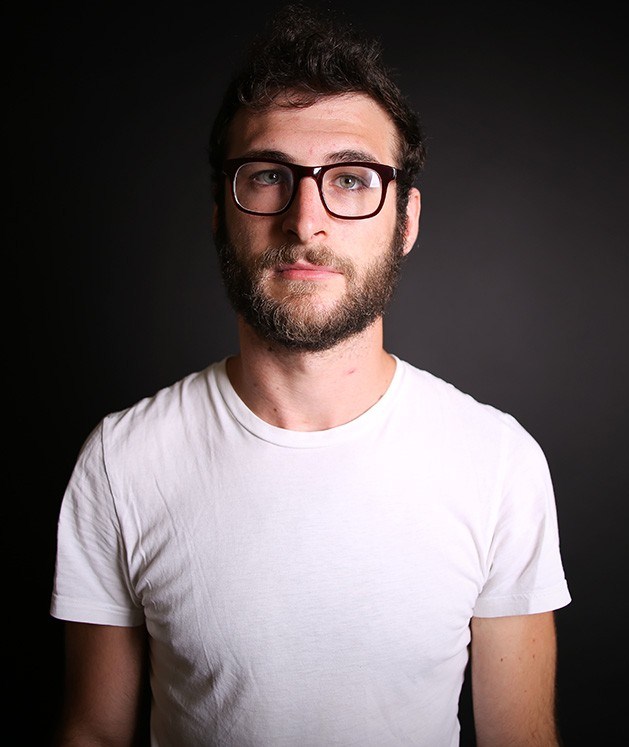 Samuel Hertz, composer and performer, received his MFA at Mills College, where he studied composition and electronic music with Pauline Oliveros, Fred Frith, and Zeena Parkins. He continually collaborates with numerous dance companies and performers throughout the United States, and his work has been seen/heard at ACUD MACHT NEU (Berlin, Germany), Bains::Connective (Brussels, Belgium), Apiary Studios (London, UK), Center for New Music (San Francisco, CA), Berkeley Art Museum (Berkeley, CA), Gray Area Foundation for the Arts (San Francisco, CA), ACRE-TV (Chicago, IL), Jack Straw New Media Gallery (Seattle, WA), Harvestworks (New York, NY), The Uncreativity Festival (Minneapolis, MN), and WBEZ Radio (Chicago, IL), among others. Samuel has worked as lead technical assistant to, and performed with Morton Subotnick, Alvin Curran, and John Driscoll. He will be in residence at Elektronmusik Studion in Stockholm, Sweden in late June. Samuel is currently part of two working groups as an artist-researcher for the Anthropocene Curriculum in association with Haus der Kulturen der Welt/Max Planck Institute for the History of Science (Berlin, Germany), and his work is released on the Nebularosa record label (London, UK).
Samuel Hertz, composer and performer, received his MFA at Mills College, where he studied composition and electronic music with Pauline Oliveros, Fred Frith, and Zeena Parkins. He continually collaborates with numerous dance companies and performers throughout the United States, and his work has been seen/heard at ACUD MACHT NEU (Berlin, Germany), Bains::Connective (Brussels, Belgium), Apiary Studios (London, UK), Center for New Music (San Francisco, CA), Berkeley Art Museum (Berkeley, CA), Gray Area Foundation for the Arts (San Francisco, CA), ACRE-TV (Chicago, IL), Jack Straw New Media Gallery (Seattle, WA), Harvestworks (New York, NY), The Uncreativity Festival (Minneapolis, MN), and WBEZ Radio (Chicago, IL), among others. Samuel has worked as lead technical assistant to, and performed with Morton Subotnick, Alvin Curran, and John Driscoll. He will be in residence at Elektronmusik Studion in Stockholm, Sweden in late June. Samuel is currently part of two working groups as an artist-researcher for the Anthropocene Curriculum in association with Haus der Kulturen der Welt/Max Planck Institute for the History of Science (Berlin, Germany), and his work is released on the Nebularosa record label (London, UK).
Mount Vision Variations (2016)
Mount Vision Variations, for solo clarinet and Sampo, is a non-linear set of variations on a theme. As both a mountain-top panoramic view of the northern California coastline, and a Federal Aviation Administration radar site, Mount Vision itself is a stand-in for two types of visioning: ocular, and sonic. Mount Vision Variations S, therefore, takes the idea of 'visioning' as the reading of a space -- calling its theme out into the dark in order to hear an echo that illuminates space. In this meeting point of mechanical and human sensing apparatuses, we may hear events out of order, correlate unrelated events, or fuse them together entirely. What remains is a confused trace, a series of echoes reflecting a source which may have never existed in the first place.
Jesper Nordin
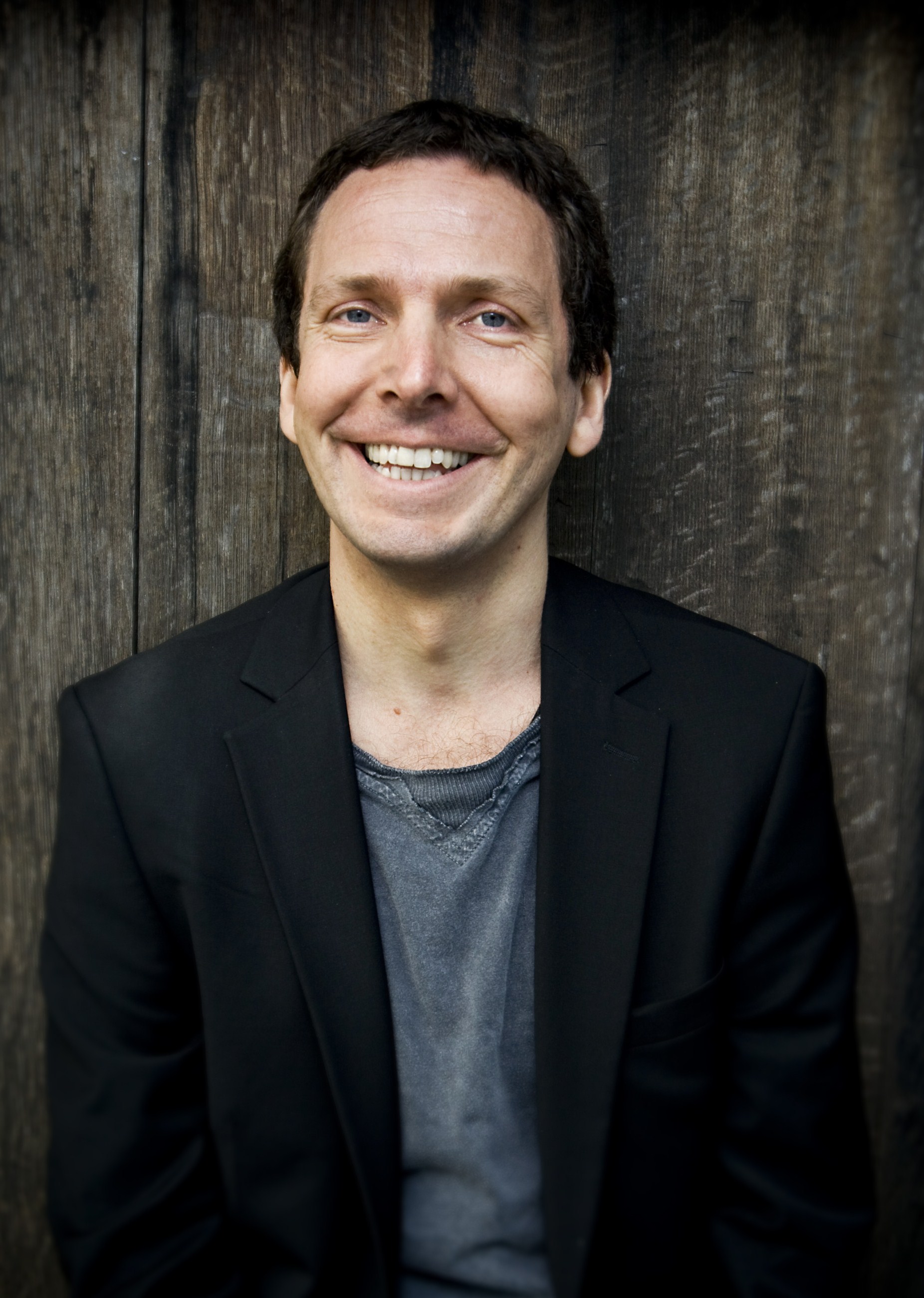 The music of Jesper Nordin, with its powerful emotional impact and traces of traditional Swedish folk music, rock music and improvised music, is broadcast and performed throughout the world by major soloists, ensembles and symphony orchestras, for instance BBC Scottish Symphony Orchestra, Basel Symphony Orchestra, both the Finnish and Swedish Radio Symphony Orchestras, Ensemble Orchestral Contemporain and Ensemble Itinéraire. He has worked with conductors like Daniel Harding, Kent Nagano and François Xavier-Roth and has received commissions from institutions like IRCAM and GRAME as well as radio stations around the world. He has also had huge success with his iOS apps Gestrument and ScaleGen that are based on his own composition technique. They are used worldwide to create music in genres ranging from Electronica and Techno to Jazz impro and Contemporary classical music.
The music of Jesper Nordin, with its powerful emotional impact and traces of traditional Swedish folk music, rock music and improvised music, is broadcast and performed throughout the world by major soloists, ensembles and symphony orchestras, for instance BBC Scottish Symphony Orchestra, Basel Symphony Orchestra, both the Finnish and Swedish Radio Symphony Orchestras, Ensemble Orchestral Contemporain and Ensemble Itinéraire. He has worked with conductors like Daniel Harding, Kent Nagano and François Xavier-Roth and has received commissions from institutions like IRCAM and GRAME as well as radio stations around the world. He has also had huge success with his iOS apps Gestrument and ScaleGen that are based on his own composition technique. They are used worldwide to create music in genres ranging from Electronica and Techno to Jazz impro and Contemporary classical music.
Calm Like A Bomb (2000)
We often hear that in the aftermath of an explosion or a similar extreme shock, there reigns a strange silence: a sort of inner, timeless silence that drowns out the outer tumult. The title "calm like a bomb" calls to mind that type of contradictory phenomenon. And in the sensual central part of this work time does indeed seem to stand still. Jesper Nordin borrowed the title from a track by the group "Rage against the machine". It was written for violin and tape, the tape part consisting of arrangements of improvisations and variations on a lullaby. Here, Nordin has edited material from the folk/rock musician Fredrik Lindqvist, violinist Daniel Frankel and the folk singer Sofia Karlsson, whose voice and vocal technique play an important role in defining the character of the music. As the music passes into the final section, it does so through the emergence of a kind of tick-tock, mechanical music, and with this slightly limping march of alternating meters and accents, calm like a bomb ends in something reminiscent of a more "urban" sound milieu. For Nordin himself, "calm like a bomb" was a seminal work on the route towards an individual idiom. The piece has been played at a number of international festivals and has been awarded several prizes.
João Pedro Oliveira
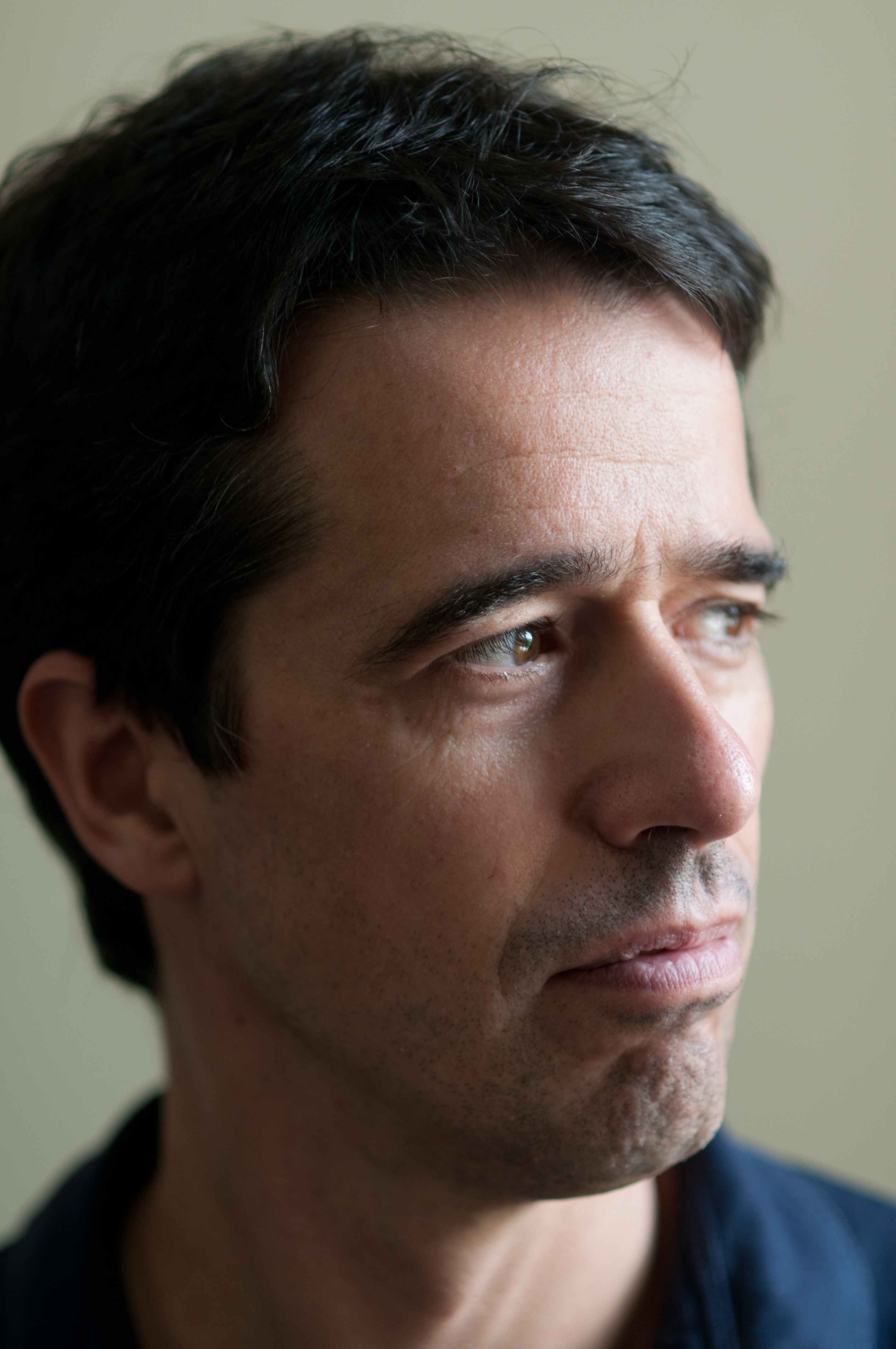 João Pedro Oliveira (born 1959) studied organ, composition and architecture in Lisbon. Ph.D. in music (composition) at the University of New York at Stony Brook. His works include a chamber opera, a Requiem, several orchestral works, three string quartets, chamber music, music for solo instrument, electroacoustic music and experimental video. A recipient of numerous national and international awards, including three awards at the Electroacoustic Music Competition in Bourges, and the prestigious Magisterium in the same competition, the Giga-Hertz Award, the first prize in Metamorphoses, the 1st Prize in the Musica Nova Competition, etc .. his music is played all over the world, and most of his works were commissioned by prestigious international institutions. He is a full professor at the Federal University of Minas Gerais (Brazil) and professor at the University of Aveiro (Portugal). He has also published several articles in national and international journals, and has written a book on the analytic theory of twentieth century music.
João Pedro Oliveira (born 1959) studied organ, composition and architecture in Lisbon. Ph.D. in music (composition) at the University of New York at Stony Brook. His works include a chamber opera, a Requiem, several orchestral works, three string quartets, chamber music, music for solo instrument, electroacoustic music and experimental video. A recipient of numerous national and international awards, including three awards at the Electroacoustic Music Competition in Bourges, and the prestigious Magisterium in the same competition, the Giga-Hertz Award, the first prize in Metamorphoses, the 1st Prize in the Musica Nova Competition, etc .. his music is played all over the world, and most of his works were commissioned by prestigious international institutions. He is a full professor at the Federal University of Minas Gerais (Brazil) and professor at the University of Aveiro (Portugal). He has also published several articles in national and international journals, and has written a book on the analytic theory of twentieth century music.
Time Spell (2004)
Time Spell uses transformed repetition as its construction material. The structure is very close to a ritornello where the repeated moments are masked or transformed to create the illusion of a constant development. The inspiration for this idea comes from a story where a man is condemned to live the same day repeated until the end of his life, and he must invent new ways to overcome this repetition and find something new.
José Henrique Padovani
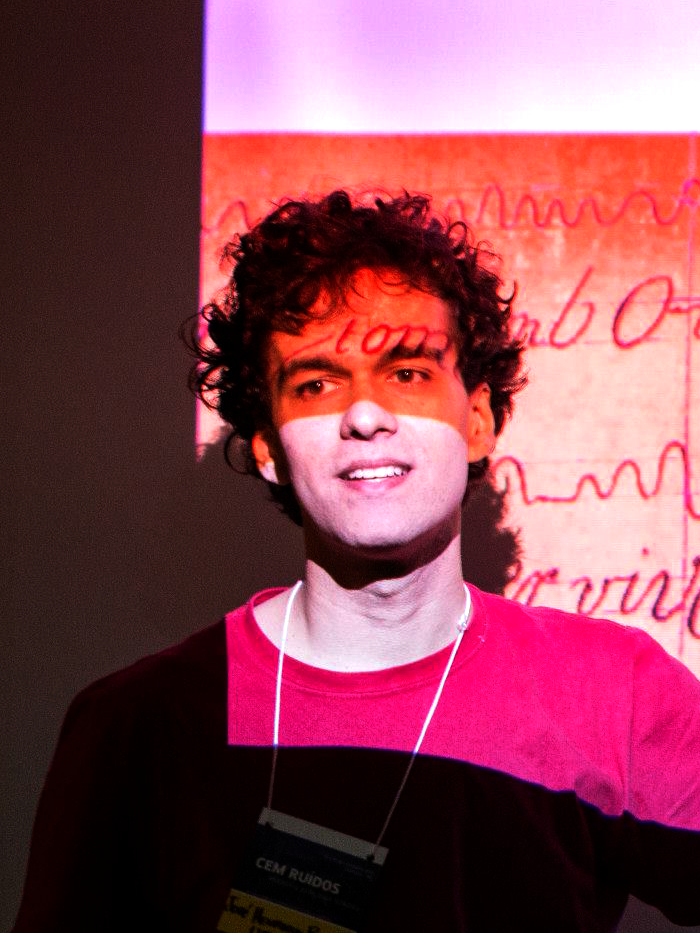 José Henrique Padovani was born in São Paulo (Brazil) in 1981 and raised in Belo Horizonte, where he had his basic musical training and completed his undergraduate course in composition. Between 2007 and 2013, Padovani continued his graduate studies at the Arts Institute of the State University of Campinas (UNICAMP). Padovani holds a Doctor of Music degree from UNICAMP, where he now is Professor of Composition, Analysis, Orchestration and Computer Music. Between 2012 and 2016 he teached at the Federal University of Paraíba. Padovani’s pieces have been played by musicians and ensembles such as The Arditti Quartet (UK), the Minas Gerais Philharmonic Orchestra (BR), Ostravská Banda (CZ), the Symphonic Orchestra of the Hamburg Music School (GER), L'Arsenale (IT), the Symphonic Orchestra of the State University of Campinas (BR), the Symphonic Orchestra of the Federal University of Paraíba (BR), and others. In 2010, he was awarded with 1st Prize Camargo Guarnieri for his piece Impedance, for flute and ensemble. In 2011 he won the 4th European Competition for Live-Electronic Music Projects, with the piece A viagem e o rio, for 17 instruments, live-electronics and video. In 2015, Padovani was awarded with the Bourges' 2nd International Composition Contest for Acoustic Instrument and electroacoustic device, with the piece Un segno nello spazio, for clarinet and live-electronics.
José Henrique Padovani was born in São Paulo (Brazil) in 1981 and raised in Belo Horizonte, where he had his basic musical training and completed his undergraduate course in composition. Between 2007 and 2013, Padovani continued his graduate studies at the Arts Institute of the State University of Campinas (UNICAMP). Padovani holds a Doctor of Music degree from UNICAMP, where he now is Professor of Composition, Analysis, Orchestration and Computer Music. Between 2012 and 2016 he teached at the Federal University of Paraíba. Padovani’s pieces have been played by musicians and ensembles such as The Arditti Quartet (UK), the Minas Gerais Philharmonic Orchestra (BR), Ostravská Banda (CZ), the Symphonic Orchestra of the Hamburg Music School (GER), L'Arsenale (IT), the Symphonic Orchestra of the State University of Campinas (BR), the Symphonic Orchestra of the Federal University of Paraíba (BR), and others. In 2010, he was awarded with 1st Prize Camargo Guarnieri for his piece Impedance, for flute and ensemble. In 2011 he won the 4th European Competition for Live-Electronic Music Projects, with the piece A viagem e o rio, for 17 instruments, live-electronics and video. In 2015, Padovani was awarded with the Bourges' 2nd International Composition Contest for Acoustic Instrument and electroacoustic device, with the piece Un segno nello spazio, for clarinet and live-electronics.
Viela (2016)
Viela, for violin and Sampo, explores the integration of the violin and the Sampo to extend and double the acoustic instrument's sounds and gestures. The electronics is thought as if the acoustic instrument was followed by other virtual bowed strings, such as violas and cellos. In Portuguese, "viela" means both "alley" and "vielle" (an ancient string instrument). The title alludes to the narrow difference between the violin and the electronics pitches and onsets, to the conception of the live-electronics as an instrumental extension of the violin, to the open strings based harmony, and to the cyclical patterns that characterize both the instrumental gestures and the audio processing effects.


